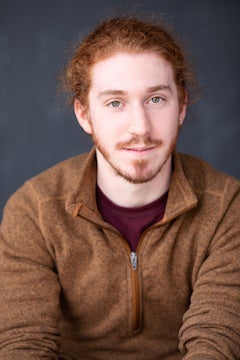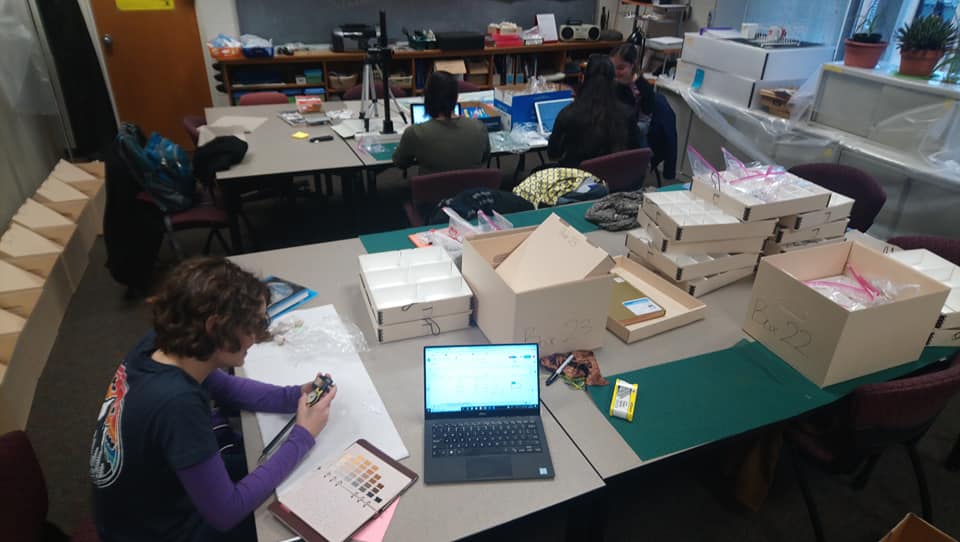Undergraduate Research
Julian Hirsch '20
OUR Featured Researcher: Julian Hirsch '20

Julian Hirsch (he/him) is an Archaeological Studies, Classical Civilizations major doing mentored research under Professors Amy Margaris and Cindy Chapman. His project is titled "The Oberlin Near East Study Collection (ONESC) Initiative".
Please describe your project:
The principal aim of my research is to digitize and contextualize Oberlin's artifact Biblical archaeology collection. By developing a sense of how the artifacts in the collection were brought to Oberlin and how they were used to teach Biblical archaeology to theology students, Oberlin's collection can be used to examine wider trends within the field of Biblical studies and its intersections with the archaeology of Palestine in the 20 th century.
Why is your research important?
Oberlin's collection is a non-renwable resource. In today's world, assembling such a collection would largely be considered unethical with certain aspects involved being downright illegal. With no obvious place for these artifacts to go, I believe that it's important to recognize their value as a teaching resource. Before taking on that role we must understand which artifacts we have and how we came to have them. As far as I know, this sort of research is unique and could serve as a template to the many other colleges across the United States with dormant archaeological collections.
What does the process of doing your research look like?
I spend time working on this most days of the week. Mondays are typically archives day where I spend hours reading the correspondence and notes left by the Oberlin religion professors involved with the collection. Other days are spent in the library reading archaeological literature from the early 20 th century to try to get a sense of how archaeology was incorperated with Biblical studies at that time. I spend my Thursday afternoons and Friday mornings taking photos of artifacts in the College's visual resources department. I used to spend hours each week recording and boxing artifacts, but I recently finished that aspect of this work.
What are your findings so far?
I think the main finding so far has been the sort of casual way these artifacts were exchanged between Theologians and archaeologists in the early 20 th century. It's a sort of shocking thing to see an Oberlin professor writing to his friend in Jerusalem asking for archaeological objects and then receiving hundreds of pottery fragments in the mail months later. It seems that to the figures involved in the field at that time, if an artifact was to be used for didactic purposes, it was absolutely fine to take it from a site and then export it back to the United States.
In what ways have you showcased your research?
A lot of this project has been a collaberative student effort. I think about ten students have worked with me on the digitization aspect of the project taking photographs, recording objects etc. That sort of work makes me feel like there are other student stakeholders across multiple years who really want to see this collection in active use again. I will also be presenting my work at the American Schools of Oriental Research conference in San Diego at the end of the month.
How did you get involved in research? What drove you to want to seek out research experiences in college?
When I was a freshman there was a faculty organized effort to catalog the collection in which I took part. At the end of that project I wasn't overly satisfied with our progress or procedure. At the same time I was developing an interest in the archaeology of the ancient Near East, a subject not offered at Oberlin. After coming up with a research plan, I went to the faculty members involved in the collection's curation and asked them if I would be able to start my own digitization effort. They agreed and this work has since provided me with a platform to independently study that subject.
What is your favorite aspect of the research process?
I think my favorite aspect of the research process is how many hats I get to wear. The project really does skirt the lines between many different disciplines i.e. anthropology, museum studies, Biblical studies etc. and I feel like this work allows me to dip my toe into all of those fields at once. The other thing I've really enjoyed is conducting oral histories. I've been able to interview a few figures who used the collection either as faculty members or students in the 60s and 70s.
How has working with your mentor impacted the development of your research project? How has it impacted you as a researcher?
I think my mentors Cindy Chapman and Amy Margaris have always kept this project grounded. In effect my research is really about this collection in the broadest sense and could go in a million directions. I think they've really helped me to concentrate on one aspect at a time so that at the end of my time at Oberlin I can leave behind a concrete record of my work which other students can build on.
How has the research you’ve conducted contributed to your professional or academic development?
My work has deepened my interest in and knowledge of Near Eastern archaeology. Since the artifacts encomass most time periods from the epi-paleolithic (c. 16,000 B.C.E) to the present, I have been able to get an idea of the types of research questions asked about different periods. This project has in part led to my developing a specific interest in the Levantine Early Bronze Age (c. 3700-2000 B.C.E) which I hope to study in Graduate school.
What advice would you give to a younger student wanting to get involved in research in your field?
If you have a project in mind, go to your professors and talk it over. Chances are they'll not only let you pursue that project, but will also provide invaluable help and advice. Getting a group of Professors together to let me work on this collection is the best decision I've made at Oberlin. If you're specifically interested in working with this collection reach out to Professor Amy Margaris and Professor Cindy Chapman, there is still an incalcuable amount of research that one could do on it.
Read about more of OUR featured researchers
